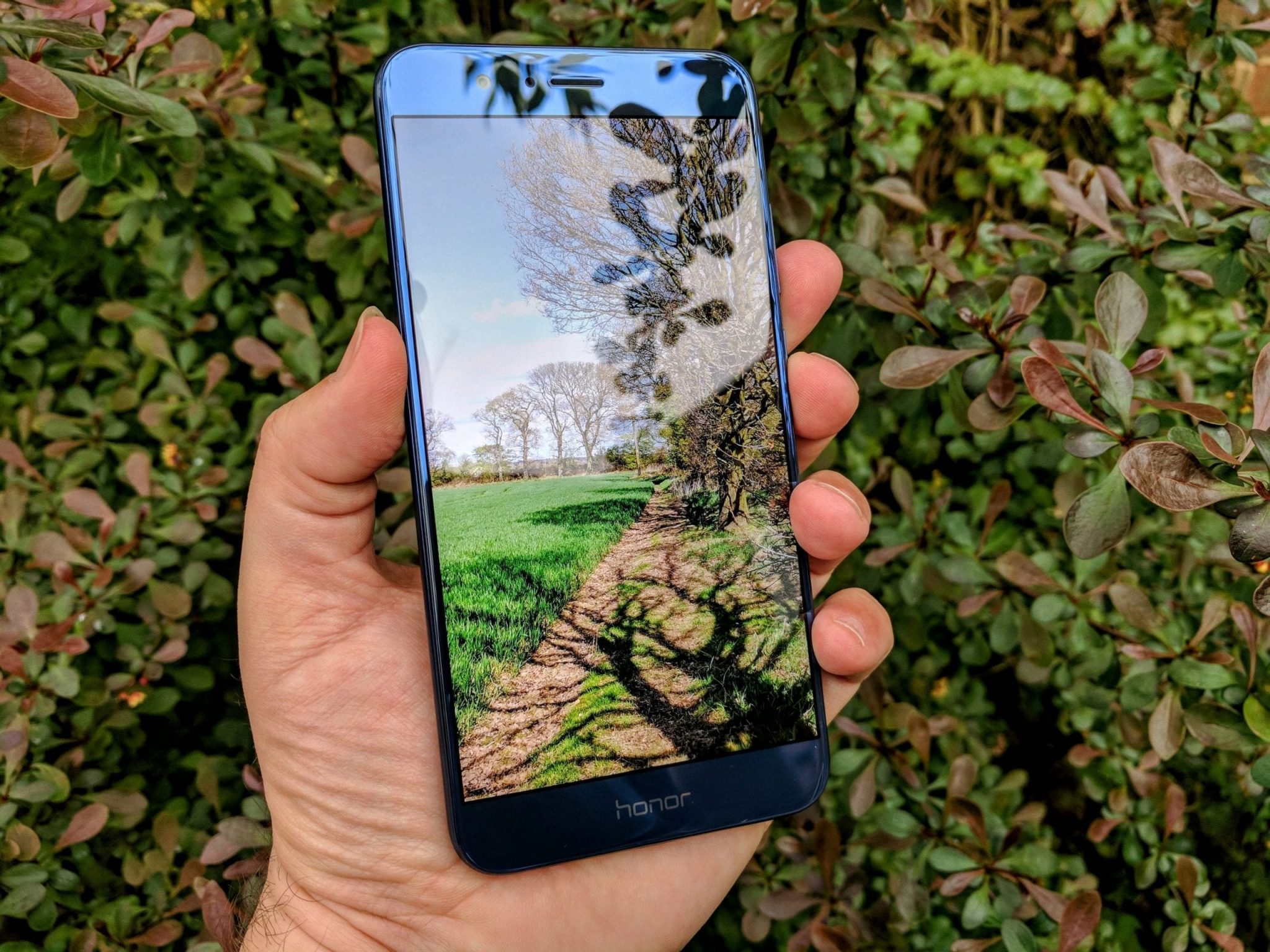
Honor 8 Pro Review: Sure you still want to lay down £700+ on a high-end phone?
Now the Honor 8 Pro is announced, I am happy to publish my full review.
First of all, let’s get a disclosure over and done with. I was given a review unit just over a week ago, making this the quickest review I’ve ever written and published. Normally I work to a strict two-week minimum, and often my reviews take even longer.
However, I’ve used this phone exclusively as my daily-driver since receiving it and feel confident I’ve been able to test it as authoritatively as possible, even in a time that breaks my own rules.
This is primarily because of the many similarities to other phones I’ve used recently, like the Huawei Mate 9 and Huawei P10, plus the original Honor 8 I still use regularly.
I hope you’ll find the review thorough, but please share any comments below and feel free to ask questions about any aspect of the phone you feel I may have missed out of the review.
Introduction

The Honor 8 Pro has quite a lot in common with the Huawei Mate 9 launched at the tail end of 2016 and early 2017, but not quite as much as you might think.
The design isn’t exactly the same for one, from the more curved corners of the Honor 8 Pro, to a different camera arrangement (the Mate 9 having a 20+12MP camera setup, over the Honor 8 Pro’s older 12+12MP setup).
The screen is also smaller, at 5.7-inches rather than the 5.9-inch screen on the Mate 9. But, where you lose overall screen size, you gain in pixels. The Honor 8 Pro has a Quad HD display, which is only available on the Mate 9 if you opt for the far more expensive (and not easy to source) Pro model.
The Honor has the same 6GB of RAM that you’d need to pay extra for on the Mate 9, which matches the similar situation last year when the Honor 8 came with 4GB of RAM over just 3GB on the Huawei P9 on which it was based.

All things considered, you’re getting quite a bit more (and for less money) on the Honor, but that’s exactly what Honor is about. It’s the cheaper brand that saves you money by axing all the slick marketing that Huawei spends millions on and passing on that money in the form of big discounts (as well as the occasional promotion, like money off offers or accessory bundles).
Chances are, away from social media, a lot of people won’t know the Honor 8 Pro exists. That’s a big problem for Honor.
Hopefully this review, and others like it, will help spread the word. Honor hasn’t paid me to say this, but it’s common sense that more people need to know about what’s out there (beyond the shelves of high-street stores) to make more informed buying decisions.
The same applies to phones form OnePlus, Blu, Oppo and many more. Gone are the days where you need to stay loyal to HTC, Sony, LG, Samsung, Motorola etc.

Design & Performance
The Honor 8 was perhaps my favourite phone of 2016, and I still love using the phone regularly today, primarily because of how great it looks with that shiny back. It never fails to bring a smile to my face.
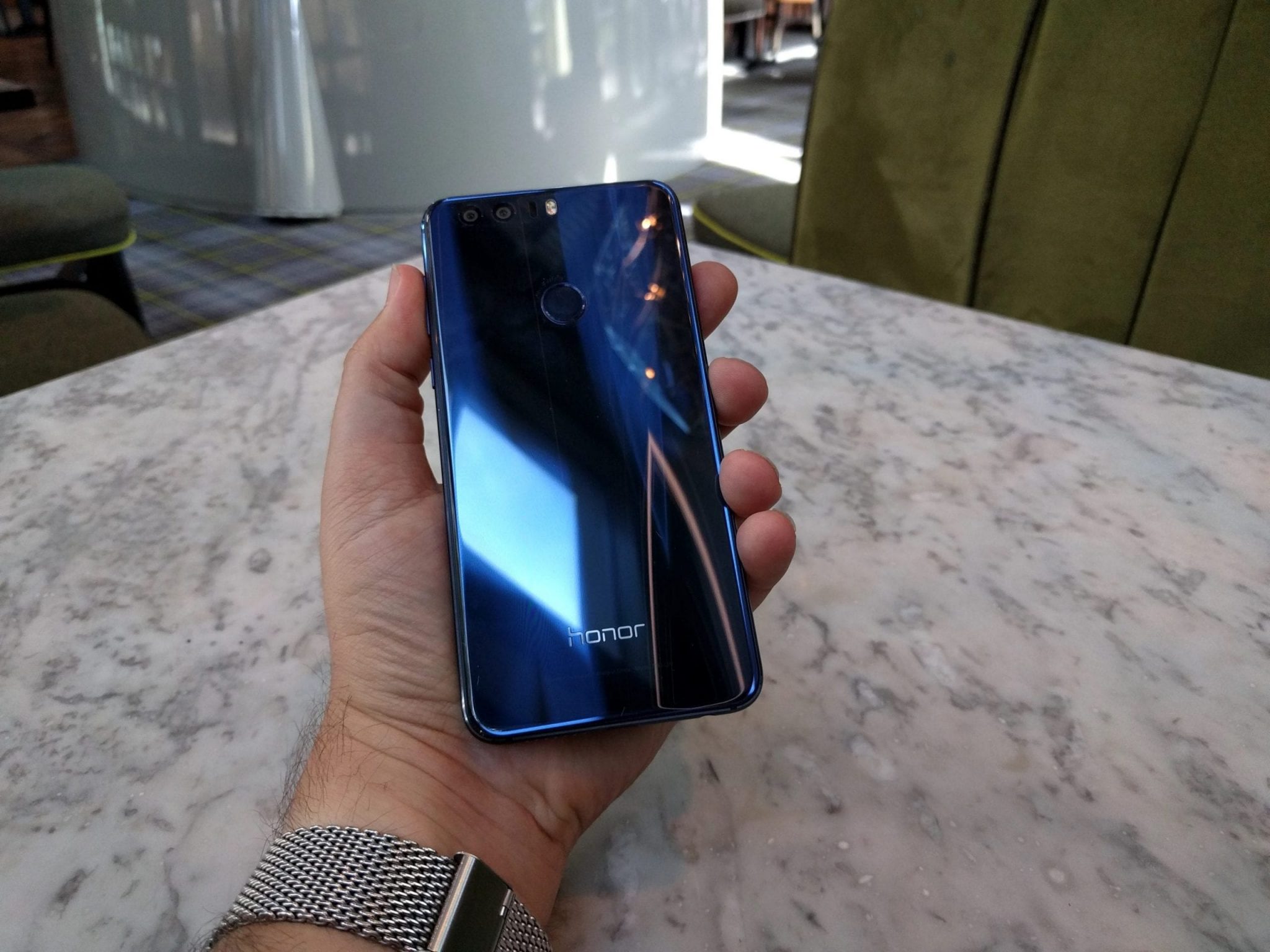
I was a little disappointed then to see that the Honor 8 Pro is still available in blue, but now has a more mundane matt finish on the rear. More practical, longer-lasting, easier to keep clean, I’m sure, but definitely a little dull in comparison.

There’s no fancy Samsung S8 curved edges either, but the 5.7-inch QHD display is bright (very bright in fact) and colourful.
Without an AMOLED panel, it hasn’t gained accreditation for Google’s VR platform, but that hasn’t stopped Honor pushing its VR credentials. It comes with a box that converts into a Google Cardboard headset, and Jaunt VR software pre-loaded.
Flip over again to the back and the camera arrangement now has the laser autofocus hidden behind the ‘Dual Lens’ decal, in line with the antenna bar (another bar also features at the base), but more of the camera functionality later on.

Up top, the phone as a microphone and Infrared port (along with software to let you control TVs, set top boxes, Blu-ray players etc) and on the base, a single (but very loud and punchy) speaker, USB-C port and a second microphone.
To the side of that is a 3.5mm headphone socket. It’s nice to see that many companies are not giving up on this just yet.

In terms of thickness, the Honor 8 Pro is a mere 6.97mm thick (the iPhone 7 Plus is 7.3mm as a comparison) and yet there’s still the same 4,000mAh battery as packed into the Mate 9.
The Honor 8 Pro uses the same flagship Huawei-manufactured Kirin 960 (clocked at 2.36GHz for the four Cortex A73 cores and 1.84GHz for the four Cortex A53 cores) as included in the Mate 9 and P10, with a huge gain in GPU performance.
The Honor 8 Pro is punching well above its weight with a £475 price-tag.
Benchmarks
The AnTuTu score is a little down on the P10 (which scored 149,117 on a recent test), but there are a lot more pixels to drive so this is perhaps to be expected. Plus I must repeat the usual warning that benchmarks don’t tell the whole story, can vary from test to test, the firmware on this phone wasn’t final, yada yada yada.
Ultimately, it’s still sitting in high-end territory. The GPU performance in particular is going to be a tremendous leap over that of the original Honor 8. A 180% performance over the Huawei P9, which was slightly ahead of the Honor 8 – so that’s not insignificant.
Camera
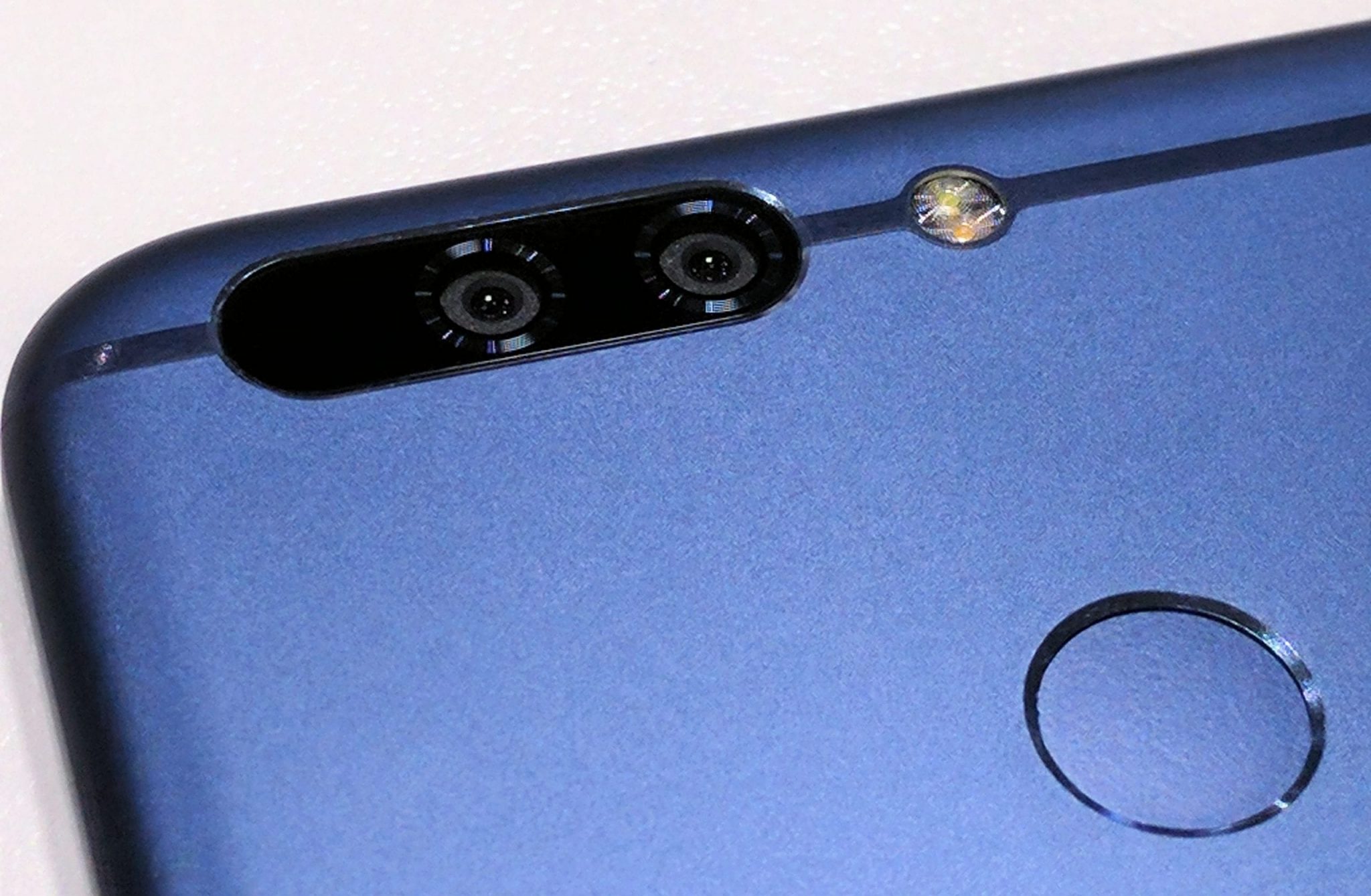
Stills
The camera on the Honor 8 Pro is basically the same as the Honor 8, but that’s not necessarily a bad thing. Certainly not a deal breaker, given the quality of photos the Honor 8 can produce. You can see many camera examples and comparisons here.
Indeed, in my testing (see the full gallery here) I found the quality to be just as good as I expected.
The Mate 9 and P10 do each come with a 20-megapixel monochrome camera alongside the 12-megapixel RGB one (which absolutely comes into its own when taking exclusively black and white photos), plus OIS, but the difference isn’t that great.
Perhaps if and when the colour sensor is upgraded too, we’ll see a real shift in quality, but I would expect that the inevitable Honor 9 will come with the same Mate 9/P10 camera setup, and it won’t be until the end of the year for any further hardware improvements.
There is now a dedicated monochrome mode, a feature that was lacking on the Honor 8, although there’s still no option to change colour profiles. I do like the smooth colour profile on the P10, but this isn’t a deal breaker either.
The wide aperture mode now works for stills and video, but there is no portrait mode as introduced on the Huawei P10. I rarely used this feature for my P10 review, so I don’t consider it a great loss. You may disagree, but there are various beauty modes to satisfy selfie fans.
There are a number of filters, panorama modes, light effects (like light trails), the exceptional night mode feature that can take an exposure of up to 30 seconds to work in the darkest of conditions, time-lapse and slow motion modes. Other modes can be downloaded, such as a good food mode and document scanner, plus an experimental 3D/360 mode I found online.
The camera interface is essentially the same as the Leica-clad Huawei phones, bar the typeface. There’s a pro mode too, which saves in JPG or RAW formats.
The double-tap to launch feature is now 15.3% faster (Honor told me, so don’t shoot the messenger). You can start the camera app from standby by double tapping the volume low key, or set it to start and take a photo immediately.
Video
4K video recording is a new addition, but it’s worth noting that the phone saves 4K video with H.265 encoding, to keep file sizes to a minimum.
However, months on from the release of the Mate 9, Google is still unable to process these video files if uploaded to YouTube.
Likewise videos backed up to Google Photos are also ‘lost’, meaning that apart from enjoying the video on the phone itself without trouble, you’ll need to ‘side-load’ your video files to a computer to work with them, or share them to another service that can manage them.
Google Drive will take the files and let you save them elsewhere, but this also throws a wobbly if you try to play them direct.
It’s important to stress that H.265 is an industry standard and Honor isn’t at fault here, although giving an option to save using the less-efficient H.264 codec might have been a worthwhile option to solve the problem temporarily.
You can see some 4K samples in the video below.
Another way to enjoy your video is with the pre-installed Quik app, produced in conjunction with GoPro. Simply select photos or videos, optionally highlighting any parts of a video clip you want to make sure is definitely included, choose from a huge number of templates and, within a matter of seconds, a video is produced that you can download or share.
Communication
Comparing the Honor 8 Pro with my Google Pixel XL, each with an EE SIM installed, showed that there was almost no difference in signal reception. On speed tests in the same location, there was a variation of around 1Mbps.
As you might expect from a large phone, and Huawei’s experience in antenna design, the performance is solid.
 Indeed, on one speed test with the Honor 8 Pro I was able to get a staggering 226.94Mbps on EE, which is slowly enhancing its 4G+ service around the UK to combine two 2600MHz carriers with 1800 for exceptional speeds.
Indeed, on one speed test with the Honor 8 Pro I was able to get a staggering 226.94Mbps on EE, which is slowly enhancing its 4G+ service around the UK to combine two 2600MHz carriers with 1800 for exceptional speeds.
The Honor 8 Pro is down as supporting Cat 6 LTE, for maximum speeds of 300/50Mbps, whereas the Mate 9 and P10 offer speeds of 600/150Mbps.
If that’s the case, and not a mistake in the specs, then the performance on the Honor 8 Pro here is even more impressive.
VoLTE support is shown in the settings, but calls made on EE forced the phone to drop to 3G every time. However, the software on my phone was not final. At the time of writing, I had not tried a Three SIM in the phone.
Wi-Fi Calling was also notable for its absence, and this could also make an appearance in due course. However, bear in mind that there’s no way of knowing when, or even if, this will definitely happen. As a result, it’s safer to consider the phone as not supporting either until you hear otherwise.
No UK operator is selling this phone, so it’s possible Honor won’t include support.
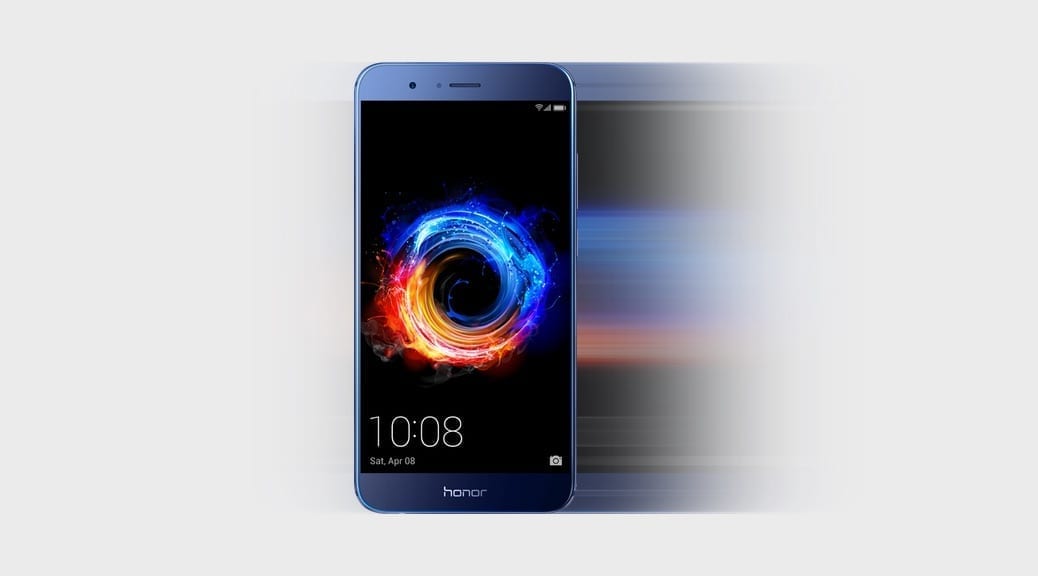
Battery Life & Usability
4,000mAh is what Samsung should have been including on its new phones, but whereas Samsung probably opted to play safe after the Note 7 troubles, Honor has had no issue with packing in a huge battery into such a slim chassis.
GSAM Battery Monitor Pro reported an average of 12 hours with 4 hours 26 minutes of screen on time, which isn’t as great as you may have hoped – but this is a phone I’ve been using a lot for taking photos. I expect battery to only improve when my usage settles down. It definitely won’t get worse.
There are many power saving options too, and you can opt to close down applications when the phone goes into standby, or automatically if they consume an excessive amount of power.
I run a number of background apps that keep the phone awake, such as my Pebble smartwatch, and various messaging apps that are whitelisted to keep running.
If I enabled the power saving options and turned the brightness down, I can easily foresee battery life of 18-20 hours with 4-5 hours screen on time being attainable.

When the battery does run low, charging is of course a necessity. Recent phones with the Kirin 960 chipset have also supported Huawei’s Super Charging, which can ramp up the power to 5V and 4.5A (22.5W). This gets you back up and running in no time.
Unfortunately the Honor 8 Pro relies on the older fast charging, as supported on the original Honor 8 and Huawei P9. This means using only the supplied 9V/2A power supply.
In case you wondered if the phone may still support the faster charging if you have access to a SuperCharge power adapter (as I do), I can confirm that it doesn’t work. In fact, it will charge at a slower rate (5V/2A) so there’s little point in trying.
The upside is that the Honor 10,000mAh battery pack I imported at great expense last year worked fine. Part of me is glad that my investment is still paying off!
Finally, at the pre-launch briefing where I got this phone, Honor was keen to talk about how thoroughly it tests all of its products.
I remember being shown accelerated life testing back in the 1990s on a Motorola factory tour, as well as what Nokia and Ericsson were doing, so this is standard for all manufacturers, but with the Samsung problems fresh in all our minds it makes for interesting reading about all the tests Honor puts the Honor 8 Pro through:

VR
Hearing that even Samsung didn’t gain Google Daydream VR accreditation on the S8 and S8+, it’s even less of a big deal that the Honor 8 Pro also lacks the certification that so far only seems to apply to Google’s own Pixel phones and maybe a couple of others.
The lack of an AMOLED display means the Honor could never pass, but I’ve used VR on the Mate 9 without any troubles and with the Honor 8 Pro, the box the phone comes in can be converted into a simple Google Cardbox VR headset.
On top of that, Honor bundles the phone with Jaunt VR, an app that offers a wide range of free VR content. Of course, you can use many other VR apps from the Play Store. Anything that supports Cardboard V1 in fact.
Colour Choices
Initially the Honor 8 Pro will be available in blue, with black and gold versions coming later.
Summary
Yet again, Honor has come up trumps and put customers in a bind – but not in a bad way.
By rights, you would expect the more expensive Huawei models to be the obvious choices for anyone wanting the best specifications and the highest-quality builds. Honor would then offer cut-down versions at a lower price.
But, just as the Honor 8 aped the Huawei P9 in many ways, so too the Honor 8 Pro has many benefits over the Mate 9.
This time the camera isn’t as advanced as its pricier ‘rival’, but the chipset is the same (bar the 4G modem) and the Honor 8 Pro has the higher resolution display and more RAM.
There’s also no way you can accuse the Honor 8 Pro of looking inferior in design terms. In fact, it’s a lot nicer (in my opinion) than the rather boxy, industrial, look of the Mate 9.
A lack of support for the fastest possible charging tech is really the only major compromise here, and one that I was able to live with.
Emotion UI is no longer something I should even need to mention as a way of trying to convince those who may have had bad experiences in the past, because now it is far more like normal Android than a poor attempt to make the phone look and feel like it’s running iOS.
You can either take time to set it up to ensure the power management is as advanced as possible (or simply use the Phone Clone app to copy the settings from an older Huawei/Honor phone if you’ve done all that previously), or just leave things as they are. EMUI 5.1 has a number of features to keep the phone running as smooth as possible after many days and weeks, with or without a reboot.
In terms of day-to-day use, it’s not massively different to a Google Pixel XL, Samsung TouchWiz and other custom UIs, so Android users can pick this phone up and get going without a long learning curve.
Soon I hope I can write a review that doesn’t even need to mention EMUI. I’m not quite there, but it can’t be long now.
The only hurdle Honor has to overcome this time is the lack of any high-street presence, given no operator is selling this phone. It’s SIM-free only, and that could stop the phone enjoying the success it deserves.
But if you’re reading this then you now know that this bad boy is out there, and if you’re still reeling over the eye watering prices of recent flagships, from the Google Pixel XL, to the iPhone 7 Plus and Samsung’s latest S8 family, you owe it to yourself to put this phone on your list of possibles.
| Good Points | Bad Points |
|
|
Review Notes
- The launcher used in the photos is Nova Launcher. EMUI 5.x now has a pretty good launcher, but I always choose to install this after a short while using the native launcher, and recommend other users do the same.
- My review unit has a software build that prevented the use of Android Pay. I am assured the retail units in the UK will have this issue resolved.
- I changed the system font from the original EMUI font.
- The phone comes with an enhanced Gallery app with support from GoPro, offering Google Photos style highlights. This has already featured on the P10.
- The phone states it can take memory cards up to 128GB in size, but this is merely a licensing issue and the phone will accept cards in excess of 128GB (in my case, a SanDisk 200GB card).
Key Specs
- 157 x 77.5 x 6.97mm / 184g
- 5.7-inch Quad HD LCD display (2560×1440 pixels, 515PPI)
- Android 7 Nougat with EMUI 5.1
- Kirin 960 Octa-core CPU + Mali-G71 GPU
- Cat 6 LTE (300Mbps/50Mbps)
- 64GB internal storage + microSD
- Dual SIM
- 6GB RAM
- Dual 12+12MP f/2.2 camera with laser AF (rear) / 8MP f/1.9 camera (front)
- 4K video recording
- Dual-band Wi-Fi
- Rear fingerprint sensor with swipe gestures for notifications
- 3.5mm headphone socket & USB-C
- 4,000mAh battery
- Fast charge support
Price: £474.99 (SIM-free, unlocked)
More info: VMall (Also available on Amazon, but not at time of publishing)
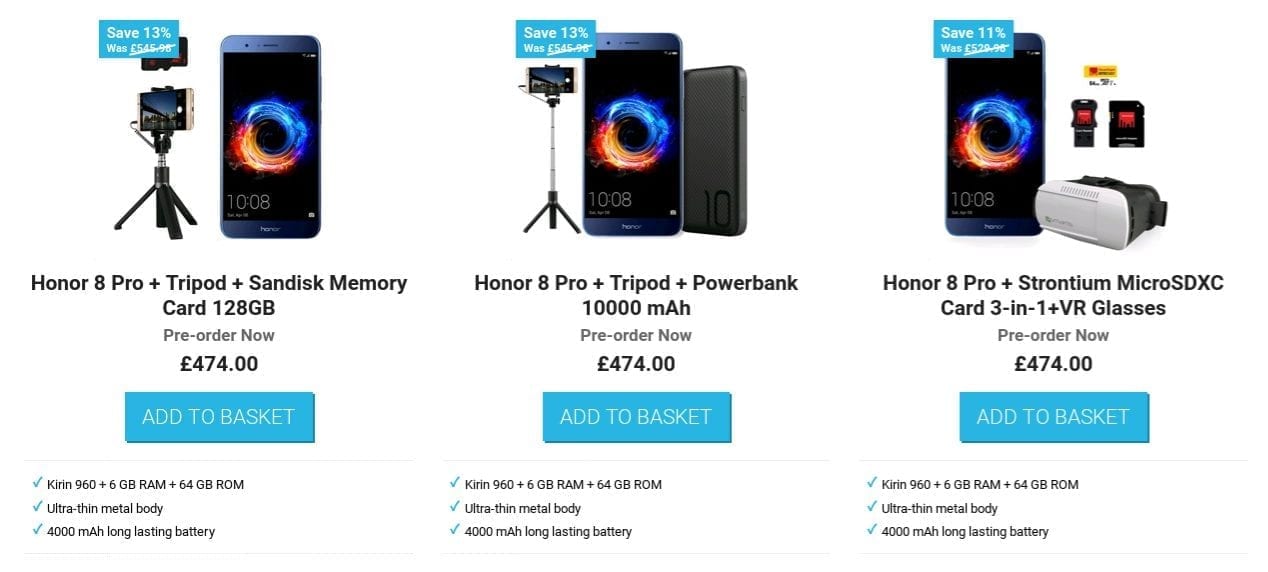


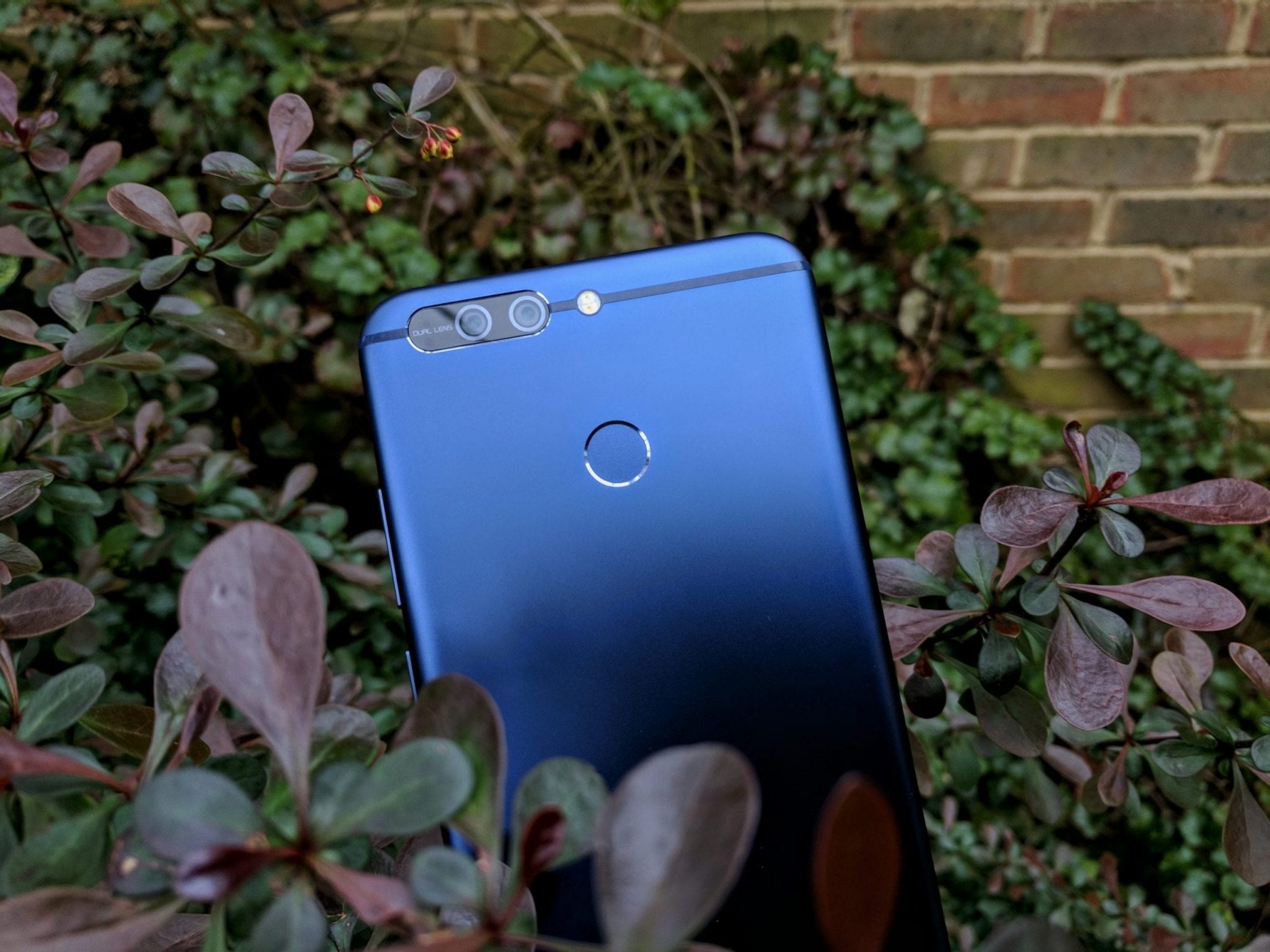















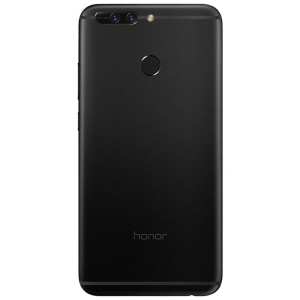


I am trying to find this out, as well as confirmation of it only being Cat 6, rather than 12 like the Mate 9 and P10 (each using Kirin 960 too, and I’d have thought the same modem).
https://polldaddy.com/js/rating/rating.jshttps://polldaddy.com/js/rating/rating.jsIt certainly looks very good. But what I’m trying to get a feel for is which LTE bands the phone that will be sold in the UK will support. GSMArena says that there will be support for bands 1, 3, 5, 7, 8, 20, 38 and 40, but of course what’s not clear is whether GSM Arena are looking at a UK-spec phone. Those look like UK bands, but that therefore means that the main US bands (e.g. AT&T use bands 2, 4, 17 & 30) aren’t there. Jonathan, do have any further information on this? Or is this simply something that is part and parcel of buying a lower-cost phone? The iPhone 7 and Samsung S8 both have comprehensive support for many LTE bands.
(You may wonder why I’m bothered about this. Well, I’m retired and beginning to travel quite a bit. While I’m away I get a local sim and use that for calls, but I must have data, the faster the better, and that means 4G.)
Actually, this site might be helpful;
https://www.frequencycheck.com/models/ObJ4a/huawei-honor-8-pro-sim-td-lte-64gb-duk-l09-huawei-duke
My phone is DUK-L09, although the box rather confusingly has it as BBQ-L09..
Thanks, Jonathan – that Frequency Check site is very useful. And it does confirm what I had maybe suspected: The cheaper devices simply support fewer bands (of all technologies). Have a look at the range of bands supported by the Honor 8 Pro and the Huawei P10 Plus phones, or the Huawei P10 and P8 Lite.
Not surprising, I suppose – TANSTAAFL is still true.
I don’t travel as much for work as I used to, and when I do I generally go to locations where the bands are similar or the same as at home. I do wish all the stats were readily available, as the P10 has support for 4X4 MIMO which I assume the Honor 8 Pro doesn’t. Then there’s the number of carriers that can be aggregated etc.
I must say, having got 245Mbps on the Honor 8 Pro (EE), I think this phone will satisfy most people for some time to come. Given it’s sold SIM-free only, and likely to those into tech, chances are a lot of people will happily upgrade to something new and shinier in 6-12 months anyway. No doubt Huawei will have gigabit LTE modems in their future devices, which will eventually trickle down.